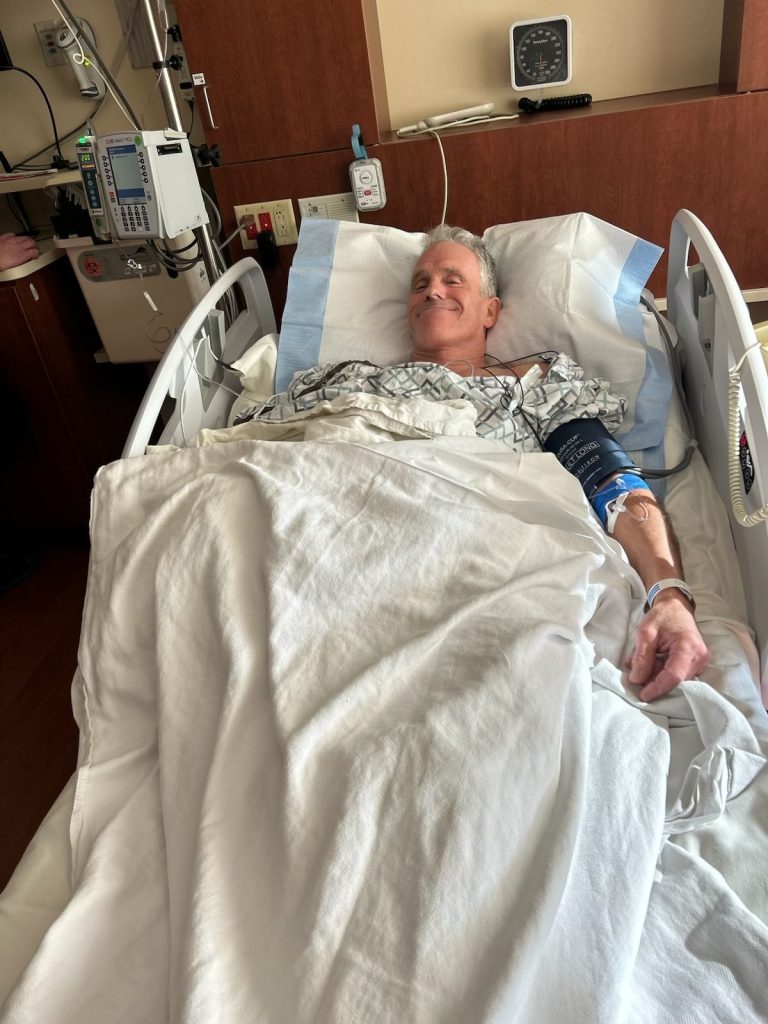Listen to your body. If the heat and humidity are causing you to feel unwell, take precautions to cool down. We want people to safely enjoy warm weather as much as possible.
Dr. Abby Smolcich, Pediatrician, ThedaCare Physicians-Darboy
Many Wisconsinites celebrate the arrival of summer and long-awaited warm weather. As you get outside to enjoy the outdoors, make sure to take precautions to protect yourself and your loved ones from heat-related illnesses.
“Always watch for signs and symptoms that the heat may be impacting you or your child,” says Dr. Abby Smolcich, a pediatrician with ThedaCare Physicians Pediatrics-Darboy. “It’s particularly important for parents to keep an eye on young kids because their body temperature rises much faster than adults.”
Heat exhaustion or heatstroke can develop swiftly, particularly when people aren’t acclimated to hot weather. Each year, heat kills more than 700 people in the United States, with extreme heat posing the greatest risk to young children and seniors, according to the Centers for Disease Control and Prevention. More than 9,200 people each year are hospitalized due to heat-related illness.
Keep Kids Safe
Heat exhaustion can occur when a person loses excessive fluid and salt through sweating. For children, this can happen while playing in hot weather without replacing fluids.
“Ensure children drink enough water,” Dr. Smolcich says. “You can also serve them sliced fruits and vegetables like melon or cucumber to add even more water.”
Signs of dehydration might include diarrhea, vomiting or dark yellow urine. Children who are suffering from dehydration can take sips of clear drinks, including Pedialyte, or eat ice chips and popsicles to help them recover.
“Seek medical attention if your child appears severely dehydrated or if their symptoms don’t improve,” Dr. Smolcich says.
Make sure to apply sunscreen before children go outside to play, swim or participate in sports. Reapply sunscreen at least every two hours — and more often if the child is swimming or sweating.
“Even when kids wear sunscreen and get plenty of water, parents should watch for signs of heat exhaustion,” Dr. Smolcich says. “This might look like irritability, fatigue or loss of appetite.”
Warning Signs in Adults
Symptoms of heat exhaustion in adults include:
Heavy sweating
Cold, pale or clammy skin
Rapid pulse
Muscle cramps
Nausea
Weakness or tiredness
Headache
For those who plan to work out or play sports in the heat, try taking a cool shower before you start, and stay hydrated with sports drinks that contain electrolytes and potassium. Avoid strenuous activity outdoors between 10 a.m. and 3 p.m., when the sun is at its most intense. Wear light-colored clothing to help deflect heat, and always apply sunscreen.
“If someone develops heat exhaustion symptoms, move them to a cool place and try to lower their temperature with cool compresses,” Dr. Smolcich says. “If their symptoms don’t improve after an hour, seek medical care.”
People are more prone to developing heat exhaustion or heatstroke if they get dehydrated, which can happen more quickly if they’ve been consuming alcohol or caffeine. In addition, certain prescription medications can increase sensitivity to sun exposure. Check with your provider or pharmacist if you have concerns.
Heatstroke
Heatstroke occurs when a person’s core temperature exceeds 104 degrees Fahrenheit, producing more heat than the body can release. In both children and adults, symptoms might include:
Flushed, hot and dry skin without sweating
Rapid pulse and breathing
Throbbing headache
Upset stomach, with nausea, vomiting and/or diarrhea
Dizziness, confusion, irritability or loss of consciousness
“Heatstroke can damage the heart, brain and central nervous system without treatment,” Dr. Smolcich says. “If you suspect heatstroke, call 911 immediately.”
Move the person to a cooler place and use cool cloths or ice packs to try to cool them down. A cool bath, if available, can help. Don’t give someone suffering heatstroke anything to drink, as they can’t safely consume anything while their consciousness is affected.
Car Seat Safety
Each year, about 40 children in the U.S. die from heatstroke after getting left or trapped inside hot cars.
“More than half of these deaths come after someone forgets to remove the child from the car, often when they intended to take the child to day care or preschool,” Dr. Smolcich says. “No parent thinks it will happen to them. It’s tragic, and it can happen when caregivers are fatigued and distracted, as we all have been.”
Some newer-model vehicles have backseat reminder systems that issue a sound or alarm if a child or item is left behind. Individuals can also purchase and install these systems separately.
“Other safety precautions include always checking the backseat when you leave the car and keeping the car locked, even at home,” Dr. Smolcich says. “About 25% of children who die of heat in cars have climbed into an unattended vehicle.”
Never leave your child alone in a parked car, even if you’ll only be gone for a few minutes. Leaving the windows rolled down doesn’t change the car’s interior temperature significantly.
If you see a child alone in a parked car, check to make sure the child responds and appears OK, and then attempt to locate the parents. If the child is in distress, call 911 immediately and attempt to get into the car and remove the child, even if you have to break in. Wisconsin has a Good Samaritan law to protect people from liability in an emergency situation.
With its warm weather and longer hours of daylight, summer is an inviting time to spend time outdoors.
“Just be aware of how you — and others — are responding to the heat,” Dr. Smolcich says.
“Listen to your body. If the heat and humidity are causing you to feel unwell, take precautions to cool down. We want people to safely enjoy warm weather as much as possible.”

Leave A Comment